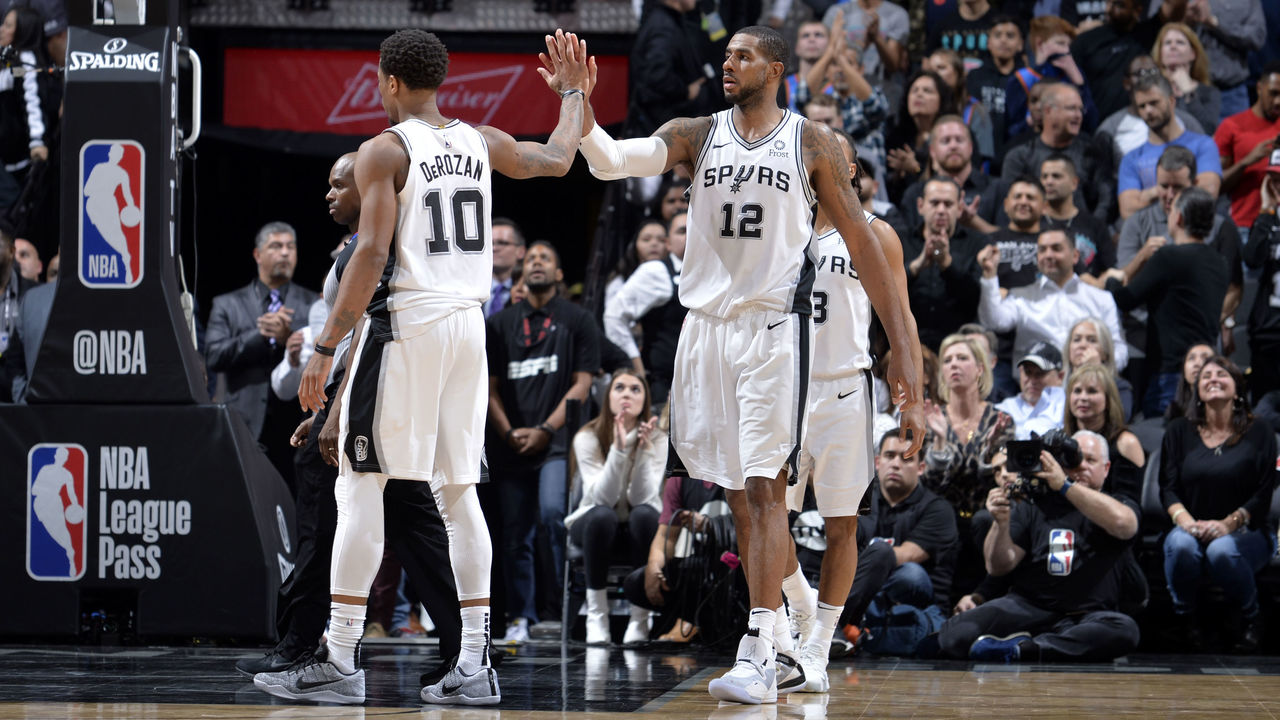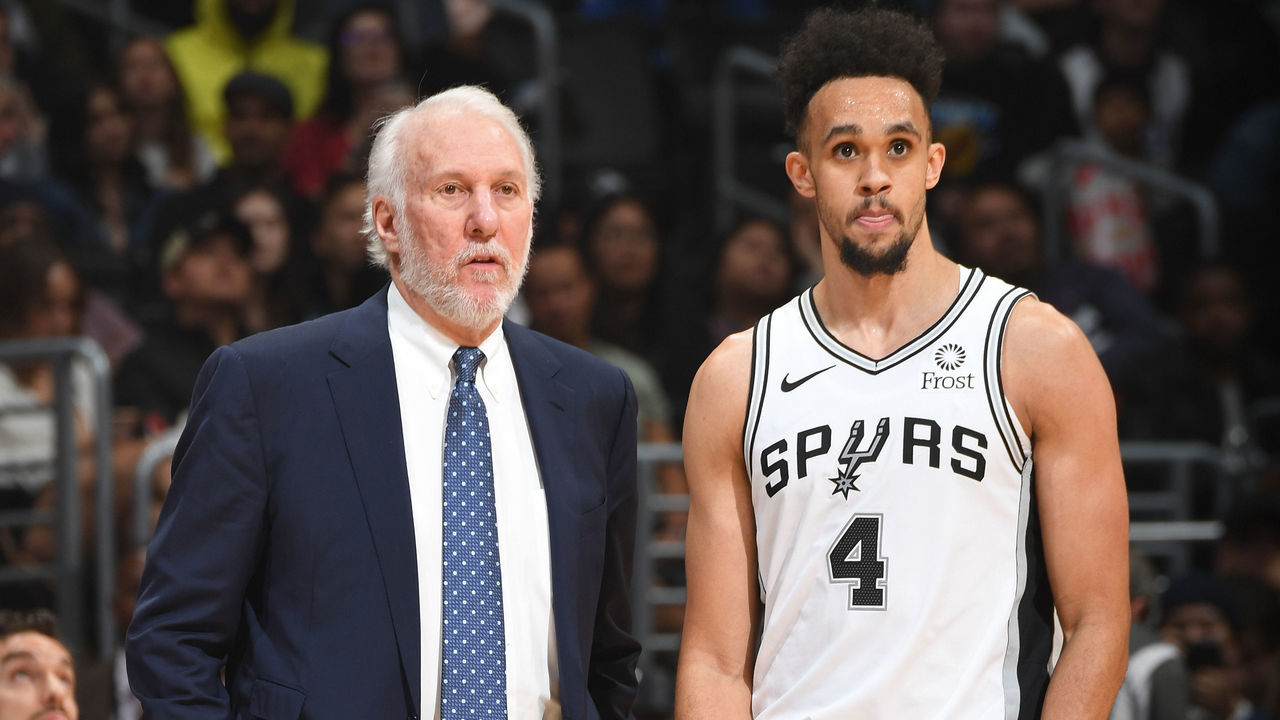This is the greatest coaching season of Gregg Popovich's career
Coming into the 2018-19 campaign, Gregg Popovich had five NBA titles and a combined 1,364 regular-season and playoff victories to his credit. Yet, with the San Antonio Spurs currently sitting at 25-20, his 23rd season as the team's head coach is shaping up to be his most impressive.
The Spurs have pushed their way back into the Western Conference playoff picture after a slow start, winning 14 of their last 20 games. They are in the top five in both offensive and defensive efficiency over that stretch, 11 of their 14 triumphs have been by double digits, and they have racked up impressive victories over Toronto, Boston, Denver, and Oklahoma City.
Popovich has built a top-12 offense around two imperfect stars, developed a dominant bench unit, and raised another crop of homegrown talent despite facing more challenges than he has at any point during his lengthy tenure in San Antonio.
The Spurs were considered a long shot to contend in 2018-19 thanks in large part to an unprecedented amount of roster turnover, as Tony Parker walked in free agency, Danny Green and Kawhi Leonard were shipped to Toronto, and Manu Ginobili called it quits. The prevailing criticism of San Antonio heading into the season was that the team's new core pieces - specifically DeMar DeRozan and LaMarcus Aldridge - were score-first players who were the antithesis of the selfless Spurs system.

DeRozan was a high-volume, low-efficiency gunner who developed a reputation for shrinking in the playoffs, and Aldridge has been an up-and-down piece who's occasionally grumbled about his role in his four years with the Spurs. They were seen as outdated players in an era that values 3-pointers above all else.
Popovich saw the situation differently. He installed an old-school system for his throwback stars instead of making them conform to the modern game. San Antonio's starting unit is straight out of 1999 - it methodically grinds out possessions, happily works the ball into the low post, and gives its stars the green light to fire dozens of long twos.
The only trick was managing spacing so DeRozan and Aldridge weren't getting in each other's way. The solution: turning DeRozan into a primary playmaker. The former Raptor isn't the type to pick teams apart with incredible court vision, but he is a relentless driver who routinely attracts double teams. DeRozan is second in the NBA in drives per game (19.0), and he is particularly adept at finding the open shooter when the defense collapses in the paint:
San Antonio can get a good shot every trip down the floor by working the action through the pick-and-pop with DeRozan and Aldridge. If the defense collapses in the paint to deny DeRozan, there's an open jumper for Aldridge. If the defense sits on the pocket pass to Aldridge, DeRozan has the momentum to take his defender to the basket. And if the defense opts to switch, Aldridge can slide into the post and bury a smaller guard under the basket, or kick out to an open shooter when a help defender inevitably arrives.
Although there's a math problem inherent in running the team's offense through two players who can't shoot threes, the Spurs have succeeded by taking the best available shot. DeRozan and Aldridge are two of the most prolific mid-range shooters in the league, and they cause enough havoc inside the arc to create opportunities on the perimeter. San Antonio leads the league in 3-point percentage in large part because of how effective the team's two stars are at making the most out of inefficient shots.
Leading Scorer By Zone.
— Kirk Goldsberry (@kirkgoldsberry) January 3, 2019
Rockets taking over the whole arc.
Spurs and KD in the midrange.
Giannis owns the acropolis. pic.twitter.com/D4HoNC54bz
Yet, for as good as the starting lineup has performed despite its perceived limitations, the bench has been just as impressive.
The four-man unit of Patty Mills, Marco Belinelli, Jakob Poeltl, and Davis Bertans has outscored opponents by 23.2 points per 100 possessions in 183 minutes on the season. To put that figure into perspective, Golden State outscores opponents by 14.3 points when Stephen Curry, Kevin Durant, Draymond Green, and Klay Thompson share the floor.
San Antonio's second unit has opponents chasing shadows. It's a complete change of pace from the starting unit, as the bench plays absurdly fast and maniacally hunts threes. Defenses are routinely caught off guard since they're effectively playing against an entirely different opponent.
Belinelli and Mills generate most of the second unit's offense by creating chaos with their constant movement. Mills is a tiny jitterbug who demands constant attention, while Belinelli is a maniac who will fire away from the most obtuse angles. The Spurs like to have both players circle the floor at the same time to create maximum panic from the defense:
Jakob Poeltl has been a revelation on both ends, just as he was in Toronto. Not only is he a reliable rim protector, but Poeltl is also a tireless screener with a natural feel for creating space using picks and handoffs. He also happens to be a 7-footer with nimble feet and soft hands around the rim, which makes him an excellent option in the pick-and-roll.
Davis Bertans brings versatility from the power forward spot. Once billed as nothing more than a Matt Bonner replacement, Bertans has developed into something closer to a 6-foot-10 Kyle Korver. He has improved his footwork on spot ups to become a 47-percent shooter from deep, he makes instant decisions with the ball, and, as a bonus, he defends all five positions.
San Antonio's bench doesn't get by on singular talent - it carves teams apart with meticulous execution. All five players are unselfish, they move and cut off the ball, and they turn down good shots for great shots. It's the same way the Spurs have played for over two decades.

Yet, for all the credit Popovich deserves for exceeding expectations on offense, constructing a coherent defense out of a collection of spare parts was his biggest challenge - and quite possibly his greatest achievement.
The Spurs got by for years on continuity and organizational structure, but Popovich lost half his rotation and four of his best wing defenders. He tried to implement the same two-on-two defensive scheme that ranked third in the league last season, but Popovich's new roster didn't have the talent nor the cohesion to effectively execute the strategy. As a result, the Spurs conceded 520 points in a four-game stretch against Houston, Minnesota, Portland, and Utah.
San Antonio hit rock bottom in early December, ranking 29th in defense and 14th in the Western Conference standings en route to a pedestrian 11-14 record.
That's when Popovich decided to scrap his entire defense and start fresh with something simpler. Instead of having his guards fight over top screens and funnel action toward the middle, Popovich switched to a more traditional strategy of dropping his bigs back and having the guards push the ball-handlers towards the sidelines. The results were night and day.
Here's how the Spurs tried to defend at the start of the year. Notice how Bryn Forbes angles his body to encourage Jeff Teague to drive towards the middle, while Aldridge is pressed high up to the 3-point line in anticipation of Teague turning the corner. All it took was one quick crossover for Teague to create an open path to a layup with no help defense in sight:
This is the same side pick-and-roll a few weeks later after the Spurs shuffled their scheme. This time, Davis Bertans cuts off the middle and funnels Derrick Rose towards the sideline, where Aldridge is situated deeper to protect the paint. Rose ultimately settles for a pull-up jumper:
The mark of a great coach is the ability to adapt. Popovich recognized that he no longer had long-limbed wing defenders who could physically deny dribble penetration on the perimeter like Dejounte Murray, Green, Ginobili, and Kyle Anderson. The likes of DeRozan and Forbes needed more help, so Popovich adjusted accordingly. San Antonio is fourth in defensive efficiency since making the switch.
The Spurs had every reason to regress this season. There were too many departures, the pieces didn't fit, the supporting cast was filled with nobodies, and they got rocked by too many major injuries to promising players like Murray.
Despite all of it, the Spurs currently own a playoff spot and are on a near 50-win pace. As always, they can thank their legendary head coach for that.
HEADLINES
- Report: Wemby out vs. Pacers after MRI shows no ligament damage
- Report: Nuggets' Valanciunas out at least 4 weeks with calf strain
- NBA Power Rankings: New Year's resolutions for each team
- Edwards leaves T-Wolves' bench late during loss to Hawks
- Jalen Johnson drops 34 on T-Wolves as Hawks snap 7-game skid